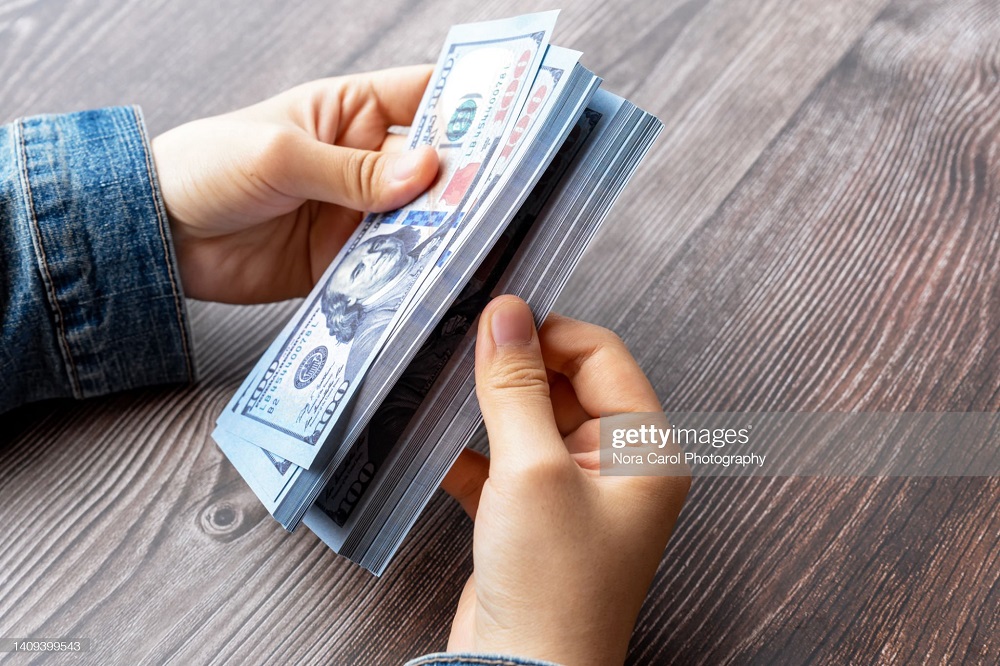Some signs of a turn for the US dollar
There have been some tentative signs of a turn for the dollar as hopes of less aggressive monetary tightening begin to rise and asset prices, such as stocks, make a modest recovery.

The dollar index, which gauges the greenback's strength against a basket of six currencies, was trading 0.56 per cent up at 111.83.
>> FED may trim the size of rate hikes from December
Some central banks have started to tone down the size of rate hikes. The Reserve Bank of Australia and the Bank of Canada have trimmed their rate hikes. Besides, Fed also signaled its intention to do this in the future at Wednesday’s FOMC meeting.
There is the close correlation between global equities and the dollar over the past year, or so, and just as the dollar has surged as stocks have slumped, we see this going into reverse in the future as asset prices recover and the dollar falls. But the key question surrounds the likely timing and extent of any recovery in equity and bond prices. It is not sure that significant rebounds are going to happen just because the Fed signals that it will slow the pace of rate hikes.
For one thing, after 3Q GDP growth hit 2.6%, the US economy is likely to emerge from recession. Europe seems almost certain to slide into recession and hence the global backdrop for asset prices still seems to be conducive to dollar strength, not weakness.
Mr. Steve Barrow, Head of Standard Bank G10 Strategy said that global asset prices would be in a better place come next spring/summer once the difficult winter is over, particularly in Europe. By this stage, we might also find that the markets are looking ahead to rate cuts from the Fed, even if these may not materialise until 2024. Hence Mr. Steve Barrow’s sense is that next spring and summer may be the period in which the dollar starts to turn, not now. In the meantime, we see continued dollar strength with euro/dollar, for instance, sliding back into the 0.90-0.95 region.
Another central bank with an important decision to make this week is the Bank of England. The Bank is in a slightly different position to the Fed as the credibility of UK policymaking is on the line, albeit more on the fiscal side than the monetary front. Sterling has stabilised in the wake of the ousting of former PM Liz Truss and the unfunded tax cuts of her Chancellor Kwasi Kwarteng. It is hard to tell just how much this episode will undermine UK assets.
>> Many central banks reduced the size of their rate hikes
For now, the tough fiscal talk of new Chancellor Hunt and the probability of a 75-bps rate hike from the BoE this Thursday could help the pound to recover more lost ground. However, Mr. Steve Barrow still has his concerns. This comes from the fact that fiscal policy may be swinging too far in the other direction, from the injudicious fiscal largesse of Kwarteng to unwarranted fiscal austerity that harks back to the post global financial crisis period under former Chancellor George Osborne.
For while there’s rightly been criticism of the way that the Truss government went about its fiscal policy actions, there’s no doubting that the underlying reasoning for such drastic action – the UK’s dire growth and productivity performance – needed addressing. Perhaps unfortunately, the fiscal scare from the Truss premiership seems to have sent the new government into a state of panic about market sentiment towards gilts and the pound with the result that fiscal policy could become too tight and the UK’s problems of low growth and poor productivity just get worse.
“It would not be so bad if the BoE could offset this with monetary easing but that’s clearly not possible with inflation up around the 10% level and the base rate currently just 2.25%. So, the bottom line is that higher rates and tough fiscal action may well help the pound and the gilt market from undergoing another dramatic slump right now, but the longer-term cost could be a slow-moving fall in the pound over time as growth and productivity continue to undershoot the UK’s peers”, said Mr. Steve Barrow.








